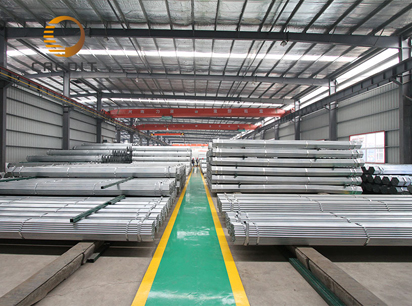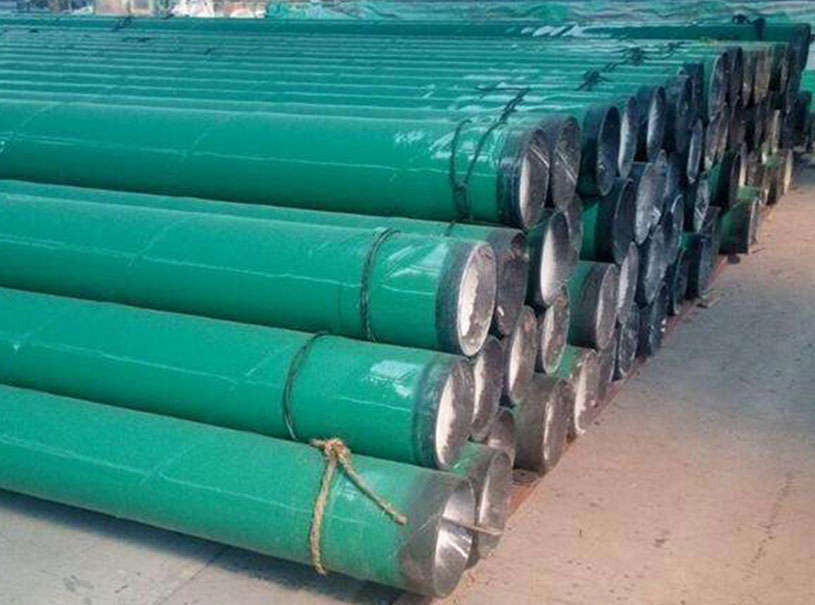Galvanized steel pipe manufacturer china shares with you that steel is susceptible to rust and corrosion in air, water or soil. In recent years, 10% of the steel in the domestic steel production industry is corroded every year, and the steel production enterprises suffer a part of the economic losses each year. In order to improve the corrosion resistance of the steel without affecting the appearance quality of the steel, the industry has tried to galvanize the surface of the steel to prevent the surface of the steel from rusting and tissue damage.
1 Principle of galvanizing
Zinc is stored in an air-dry space to maintain its performance stability. If the air humidity is high, a dense basic zinc carbonate film will be produced on the zinc surface, which can block the air from contacting the inside. In a specific environment, the damage of the galvanized layer exposes the steel substrate, and the steel substrate reacts with zinc to form a special microbattery. The steel substrate that becomes the cathode is also protected.

Galvanized Steel Pipe
2 Classification of galvanized steel pipe
Galvanized steel pipe is divided into two types: hot-dip galvanized steel pipe and cold gi galvanized steel pipe. The hot-dip galvanized steel pipe has a thick zinc layer, which has the advantages of uniform coating, strong adhesion and long service life. Cold galvanized (electroplated) has low cost, and its corrosion resistance is much worse than hot galvanized steel pipe. Due to the strong corrosion resistance of hot-dip galvanized steel pipes, the amount of cold-galvanized steel pipes is gradually decreasing, and the use of hot-dip galvanized steel pipes is dominant. The following is a detailed introduction of two types of galvanized steel pipes.
2.1 Hot-dip galvanized pipe
This type of steel pipe makes the molten metal zinc and iron substrate react with each other to form an alloy layer, so that the plating layer and the substrate closely adhere to each other. The working process of hot-dip galvanized steel pipe: first pickling the steel pipe, washing the iron oxide on the surface of the pipe body; washing with NH4Cl and ZnCl2 aqueous solution or mixed aqueous solution in the tank, and then placing it in the hot-dip galvanizing tank for hot-dip galvanizing Zinc. The molten plating solution reacts with the substrate to form a zinc-iron alloy layer (the zinc-iron alloy layer has a dense structure and strong corrosion resistance). The steel tube base, the pure zinc layer and the alloy layer have been fused into one body, so it has strong corrosion resistance. Hot-dip galvanized steel pipe is hot-dip galvanized welded steel pipe for low-pressure fluid transportation. It is hot-dip galvanized inside and outside on the basis of welded steel pipe, so that the inner and outer walls of the steel pipe are galvanized at the same time, which greatly improves the corrosion resistance of steel pipes, reaching 20 times that of ordinary steel pipes Right and left, hot-dip galvanized steel pipe is widely used as a pipeline or metal structure in fire protection engineering, gas transportation, petroleum processing, industry, water conservancy, engineering construction, and residential construction.
2.2 Cold-galvanized pipe
The cold galvanized steel pipe is a steel pipe that has been degreased and rust-free, and shows no pollution and wetness. When the DC power is turned on, the zinc ions on the anode migrate to the cathode and discharge on the cathode, so that the surface of the steel pipe is coated with zinc. Cold galvanizing is electro-galvanizing. The surface of the steel pipe is smooth and flat. The zinc layer and the steel pipe substrate are layered independently. The zinc layer is simply attached to the steel pipe substrate and easily falls off. The zinc layer is thinner and the amount of galvanized is less, only 10g-50g / m2, and its own corrosion resistance is relatively low. Therefore, the amount of cold galvanized steel pipe is relatively small.
3 Performance characteristics of galvanized steel
①The surface of the steel is covered with a layer of pure zinc with a certain thickness and a dense structure, which blocks the possibility of contact between the corrosion solution and the steel, thereby preventing the steel from being corroded by the solution. The zinc layer will form a thin, dense and hardly water-soluble zinc oxide layer on the surface of the air, which can prevent the steel substrate from contacting the air and rusting. In addition, if zinc oxide reacts with other components in the air to form an insoluble zinc salt, it can also have a good anticorrosive effect. ②The iron-zinc alloy layer with dense structure and strong anti-corrosion performance can be used in marine construction and industrial anti-corrosion. ③Zinc-iron is miscible due to strong bonding, so it has good wear resistance. ④The ductility of zinc is good, and its alloy layer can be firmly attached to the steel substrate. Therefore, in the industrial production, hot-plated parts can be formed by rolling, bending, cold stamping and wire drawing, and the coating is not damaged. ⑤After hot-dip galvanizing of the steel structure, it is equivalent to an annealing treatment, which can effectively improve the mechanical properties of the steel substrate, eliminate the stress during the forming and welding of the steel, and facilitate the turning of the steel structure. ⑥The surface of the hot-dip galvanized steel pipe is bright and beautiful. ⑦Pure zinc layer is the most plastic layer in hot-dip galvanizing layer. Its properties are basically close to pure zinc and it has ductility, so it is flexible.
Because galvanized steel pipe has the advantage of strong anti-corrosion performance compared with ordinary steel pipe, and the anti-corrosion performance is mainly determined by the quality of galvanized steel of galvanized steel pipe. Therefore, the national standard puts forward stricter requirements for the quality of galvanized steel of galvanized steel pipe .

没有评论:
发表评论